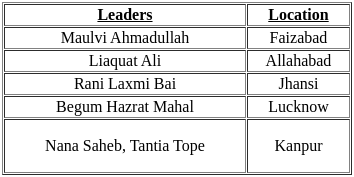History: CUET Mock Test - 9 - CUET MCQ
30 Questions MCQ Test - History: CUET Mock Test - 9
With reference to the Mughal Administration, consider the following statements:
1. The Mansabdari System was introduced by Mughal emperor Babur.
2. Sawar indicated the number of cavalrymen required to be maintained in service by the Mansabdar.
Which of the statements given above is/are correct?
The leader who participated in the Revolt of 1857 from Bareilly?
With the reference to Ain-i-Akbari, which of the following statement is incorrect?
The 'Ring wells', excavated in the earliest cities that were developed about 2500 years ago, were used for:
Give the correct chronological order
1. Nana Sahib denied the claim as Peshwa
2. Heir of Jhansi not recognized
3. Shah Alam was not recognized as Mughal Emperor
Arrange the following major developments in chronological order that led to the formation of the Constitution of India.
(A) Executive was made partly responsible to the provided legislature.
(B) Elections were held under Government of India Act in which Congress won in 8 provinces.
(C) Draft Constitution was introduced.
(D) Promoted Election which led to the creation of the Constituent Assembly.
(E) Jawaharlal Nehru moved Objective Resolution.
Choose the correct answer from the options given below:
Which of the following statements about Francois Bernier’s observations are correct?
(A) Bernier was a French traveler who visited India during Aurangzeb’s rule.
(B) He described Mughal society as highly egalitarian.
(C) He criticized the Mughal system of land ownership.
(D) Bernier’s writings influenced European views of India.
(E) He praised the Mughal emperor’s control over the economy.
Choose the correct answer from the options given below:
Which of the following statements about Duarte Barbosa’s accounts are correct?
(A) He was a Portuguese traveler who visited India in the early 16th century.
(B) His descriptions provide insights into the Vijayanagara Empire’s economy.
(C) Barbosa was impressed by Indian agricultural productivity.
(D) He observed that Indian rulers encouraged international trade.
(E) His accounts were written in Persian.
Choose the correct answer from the options given below:
Which of the following statements about Marco Polo’s visit to India are correct?
(A) Marco Polo was an Italian traveler who visited South India.
(B) He provided descriptions of the Chola and Pandya kingdoms.
(C) Marco Polo’s accounts focused primarily on India’s political structure.
(D) He described India’s commercial wealth, including its trade in spices.
(E) Marco Polo traveled extensively through North India.
Choose the correct answer from the options given below:
Match the Mughal emperors with their agrarian policies

Match the sources with their contributions to the study of Mughal agrarian economy

Match the historical figures with their roles in colonial agrarian policies

Which regions of India saw the introduction of the Ryotwari system?
How was the Ryotwari system different from the Permanent Settlement?
Which of the following leaders played a key role in the Revolt of 1857?
Why were Indian soldiers in the British army dissatisfied?
Which of the following regions actively participated in the Revolt of 1857?
Who were a doctor, political philosopher, and historian?
Bernier was drawing an oversimplified picture of what?
















